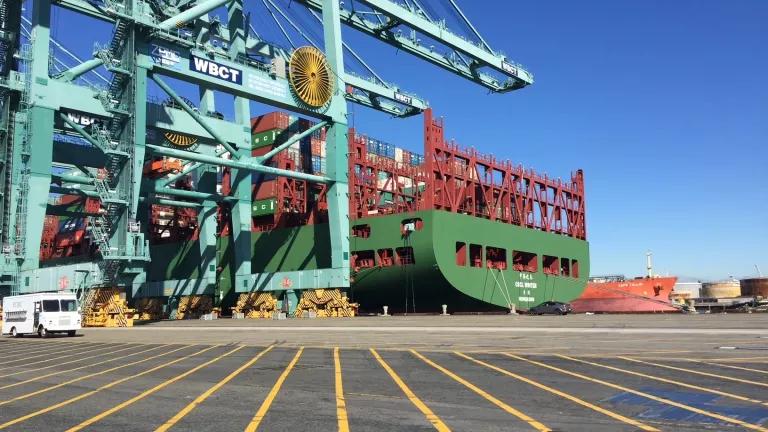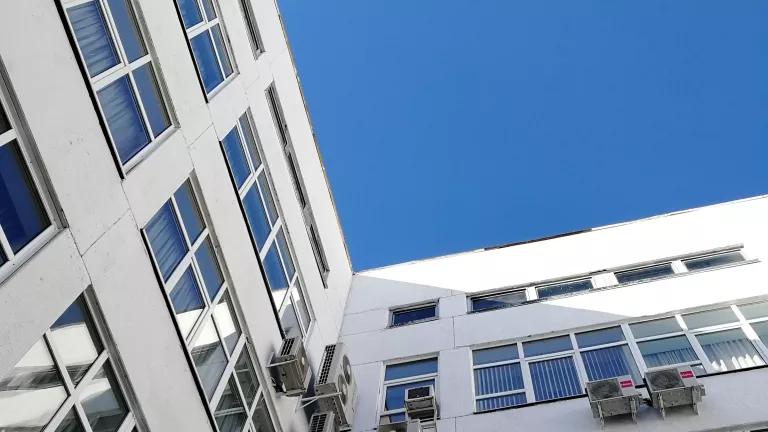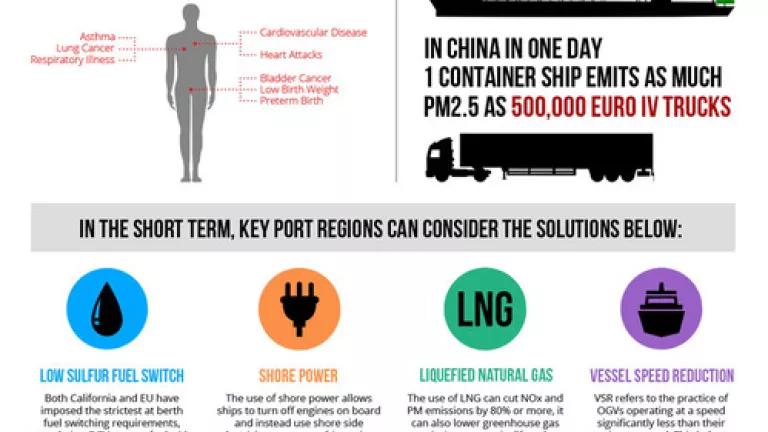While the air in Beijing and throughout much of China has been notoriously polluted in recent weeks, Hong Kong (where I currently live) does not fare much better. The poor air quality in Hong Kong has been a source of concern and protest here for many years. Both residents and environmental groups have long demanded that the government do more to tackle the problem, as air pollutants consistently exceed World Health Organization limits as well as levels set by the Hong Kong government itself. Last August, pollution levels were the highest in two years around main business and shopping districts (Central, Western, Causeway Bay, Mongkok), prompting the government to issue warnings to the elderly and sick to stay indoors. In fact, a recent study rated Hong Kong as the third most polluted among Asian cities, rivaling some of the most polluted cities worldwide.
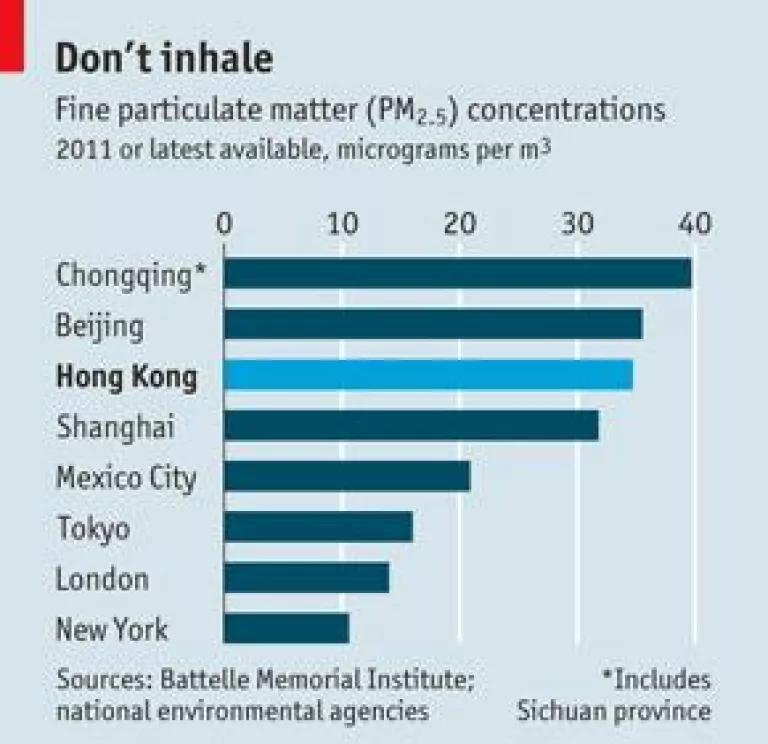
Air pollution affects both public health and the economy in Hong Kong. An estimated 7,240 premature deaths have resulted from air pollution in the past seven years. Asthma and bronchial infection cases continue to soar, costing millions of dollars a day in doctor visits and lost productivity. Additionally, polls show that because of air pollution, nearly 25 percent of businesses experience difficulties in recruiting professionals to Hong Kong, and one in four citizens is considering emigrating (over 1.7 million people).
Hong Kong’s government is finally taking serious action to address its choking air pollution and bring about long term improvements – as a first step, by tackling the city’s dirty diesel fuel. Much of Hong Kong’s air pollution is generated locally by two sources: motor vehicles and marine vessels. Among motor vehicles, much of Hong Kong’s roadside air pollution comes from those running on dirty diesel fuel, which emits particulate matter and nitrogen oxides that cause enormous damage to human health. According to Hong Kong’s Environmental Bureau, there are 128,000 commercial diesel vehicles and 88,000 of them are running on high sulfur, pre-Euro IV standard fuel. These contributed 88 percent of particulate matter and 46 percent of NOx of all vehicle emissions in 2010. Switching to lower-sulfur, Euro V fuels would reduce emissions by 80 percent and 30 percent, respectively.
In his 2013 Policy Address on January 17th, Hong Kong’s Chief Executive C. Y. Leung proposed setting aside $10 billion Hong Kong Dollars (US $1.3 billion) to subsidize the phase out of commercial diesel vehicles running on pre-Euro IV standards fuel. Specifically, the government will offer a subsidy equal to 30 percent of the value of a new vehicle to those who replace their pre-Euro IV diesel commercial vehicles, as well as financial incentives to those who scrap their pre-Euro IV diesel commercial vehicles without replacing them. In addition to financial incentives, Hong Kong will also use regulatory measures to phase out heavily polluting commercial diesel vehicles. Hong Kong plans to “stop renewal of licenses for pre-Euro IV diesel commercial vehicles” in three phases: ban pre-Euro and Euro I vehicles by January 1, 2016; Euro II by January 1, 2017; and Euro III by January 1, 2019. It will also require newly-registered diesel commercial vehicles to retire after 15 years of service. Hong Kong’s Undersecretary for the Environment, Christine Loh, who has been a champion for environmental protection in Hong Kong for many years, has met with industry leaders since the announcement and is working on reaching a consensus on the proposed standards.
Hong Kong is also planning on regulating marine emissions, as marine vessels were one of the largest sources of particulate matter, nitrogen oxides and sulfur dioxides in 2011. Ocean-going vessels (OGVs) use an average of 2.6 percent sulfur fuel (2,600 times higher than that of motor vehicles) and emitted 40 percent of all emissions within Hong Kong waters while at berth. In January 2011, a group of ship owners adopted the Fair Winds Charter, a two-year voluntary program (recently extended to December 2013) in which OGVs switch to cleaner fuel (sulfur content less than .5 percent) while docking at Hong Kong ports. The Hong Kong government began providing financial incentives last September to participants of the program by reducing their port fees by half for three years. Yet, it is ultimately legislation that would make fuel-switching mandatory that the participants have been pushing for, since competing against shipping lines that are still burning cheap, dirty fuel has put them at a disadvantage. Now, they will finally get the level playing field they’ve been asking for. According to the Civic Exchange, a prominent local public policy think tank, this is a “major policy breakthrough in ship emissions control” which it estimates will “reduce sulfur dioxide and particulate emissions from ocean-going vessels by 33% and 25% territory-wide, respectively.”
But because air pollution is a regional issue, the Hong Kong government is exploring with Guangzhou and Shenzhen Port Authorities (two of the biggest ports in the Pearl River Delta region) joint measures that would require OGVs to switch to low-sulfur fuel while berthing in PRD waters. Ultimately, Hong Kong would like to establish an Emission Control Area (ECA) in PRD waters – the first in Asia – with Guangdong Province, a move that is also being supported by participants of the Fair Winds Charter. Implementing an ECA would clean up all ships operating within 200 nautical miles of the Hong Kong and Guangdong coastlines, and ultimately cut ship emissions by more than 85 percent. So far, both Guangzhou and Shenzhen Port Authorities have responded positively to the ECA proposal.
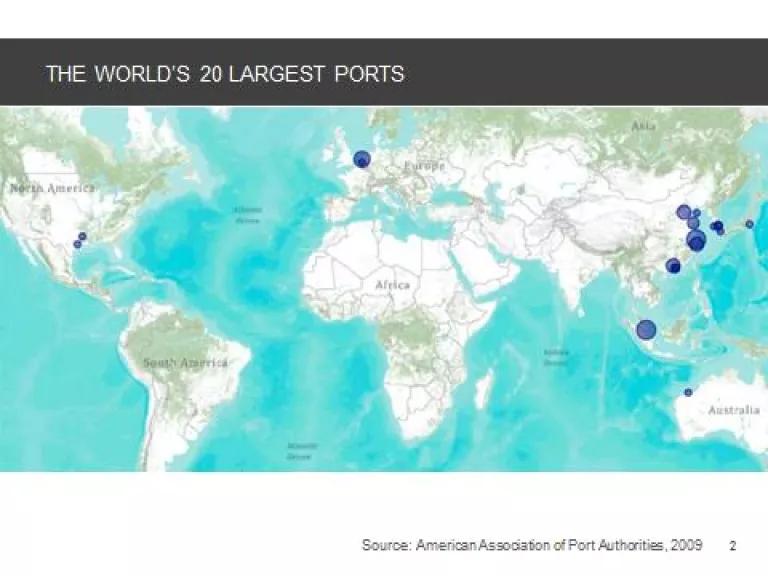
Asia is home to 13 of the world’s 20 busiest ports and with it, extremely high urban pollution levels
NRDC has been working to eliminate dirty diesel fuel and cleaning port operations worldwide for over two decades. We have pioneered programs to reduce port-related pollution at the ports of Los Angeles, Long Beach, Oakland, New York, New Jersey, and elsewhere. In addition, NRDC worked with the U.S. government, the private sector, and members of the International Maritime Organization to create the Emissions Control Area that will reduce particulate pollution from ships at U.S. ports and off U.S. coasts by more than 85 percent by 2020. In addition to cleaning up shipping fuel, we have been a leader on clean freight, using a full suite of legal and policy tools to clean up the largest toxic hotspots around the Ports of Los Angeles and Long Beach, as well as major diesel cargo centers in other regions including New York and New Jersey, San Francisco Bay Area, Midwest, Gulf Coast and Pacific Northwest. NRDC spearheaded the creation of the first "green container terminal" at the Port of Los Angeles, which utilizes shoreside power for ships and alternative fuel yard equipment. NRDC's efforts to reduce port generated air pollution also led to the Port of Los Angeles and Long Beach's landmark Clean Air Action Plan and award-winning Clean Truck Programs, as well as the Clean Air Strategy and the Truck Replacement Program now being implemented at the Port of New York and New Jersey.
We applaud Hong Kong’s new determination to eliminate dirty diesel fuel. We also commend their efforts to not only implement local clean-air initiatives but also lead the entire PRD region in reducing air pollution and improving public health. Guangdong Province’s willingness to cooperate with Hong Kong on regional air pollution reduction efforts is not only encouraging but necessary. Now, the governments of Hong Kong and Guangdong must keep up the momentum and take concrete actions.
This blog was coauthored with my colleague Christine Xu and my former colleague Rich Kassel (now with Gladstein, Neandross & Associates).

